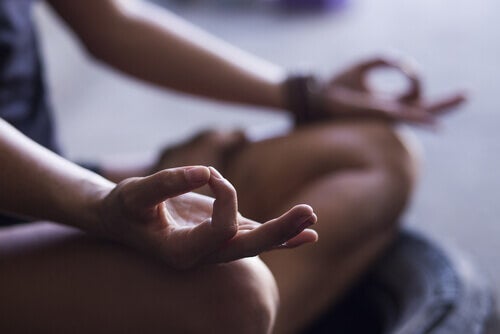Conscious attention, meditation, mindfulness, mindfulness, Sati, as it is called in Pali, is a practice in which we become aware of the different facets of our experience in the present, in this sense starting to meditate is an opportunity to become aware. how we move, how we feel (both physically and emotionally) and how we react or react in every situation. This kind of consciousness, for example, is the basis of all creative life: it allows us to be honest, pragmatic, attentive, courageous and with initiative.
At certain times of the day, perhaps in groups, we stop paying attention to what’s going on around us and devote most of our mental resources to working with our thoughts, whether problems or problems. ‘ideas. Somehow, we go into autopilot mode and log out. We get dressed, shower or have breakfast thinking about what we’ll do first when we get to work, so our journey begins long before we sit in front of the computer or take our work tools. .
- To start meditating and reaching a state where everything flows and where our attention is totally focused on what is happening now.
- Both inside and outside of us.
- There are many paths.
- One of the best known and most practiced is mindfulness.
- Which allows to be developed in four basic steps:.
The mindfulness technique is a preparation process similar to that of other methods in which meditation is practiced, that is, each points to a very particular situation: an awakening of attention and a state of body relaxation. ideas of this process that will help us start meditating.
The first idea is to relax the body, for this we can use conscious breathing and a technique called “Body Scan” or “Body Scan”. Body scanning involves exploring and observing the body itself. It starts with the feet and the other areas of the body are traveled.
We look curiously at the sensations we receive from each of the areas in which we focus our attention, the body analysis can take 5 to 20 minutes. After performing this body analysis, we begin to focus the meditative process on the present, leaving in our minds what needs to work, we will acquire the position of observer.
This approach in the present can be achieved by focusing an object (with any object, simply by observing it). This can also be done with sounds (listen to sounds that we certainly do not perceive when we are not in this state of attention). Finally, it can also be achieved with physical sensations (what we feel in our body), among others.
Attention to mind and emotions from the viewer’s point of view means receiving what our inner world wants to show us, at this stage it is about avoiding interpreting and judging, everything that happens within us is normal and means knowing us. .
These practices develop towards tonglen and metta. Tonglen and metta refer to compassion for ourselves and others; In this way, we turn to the forgiveness, gratitude, appreciation, and compassion we have with ourselves and others.
To start meditating you have to pay attention to the different variables, these variables are: breathing, senses, body, mind and activities of daily life, exercises to develop mindfulness can be divided into five groups:
One of the most well-known exercises is that of raisins, with a few raisins in hand we will observe its shape, texture, color, smell, etc. As soon as we finish the scan, we chew it very slowly, collecting impressions while we have the grapes in our mouths, so we will focus our attention on the current experience of observing and eating a few raisins.
Another exercise we can do to meditate is STOP and RAIL, which corresponds to the following acronyms:
To manage thoughts, we can perform the following exercises
It is about recording on paper the activity we carry out, the level of active presence in this activity (from 0 to 100) and the rest of the activities that we were carrying out in the meantime, in this way we will be aware of the attention to pay to what was happening or what we were doing at the time.
It is possible to develop this exercise through the challenge of 100 things, by David Bruno (2010), which is to get rid of things, because it is more useful to collect moments than things, in this way we will practice the release of material goods, but also relationships that can be harmful.
The practice of compassion can be done as follows
These are the basic exercises that can serve as a reference for anyone who wants to start meditating, as you can see are very simple, especially if they are compared to all the well-being that they can bring us when we put them into practice.
References:
Kabat-Zinn, J. (2013), Mindfulness for beginners, Kairs, Barcelona
Simon, Vicente. (2014), Learn to practice mindfulness, publishing house Sello, Barcelona.
Teasdale, J. , Williams, M. and Segal, Z. (2013), The way of mindfulness, Paidus.

